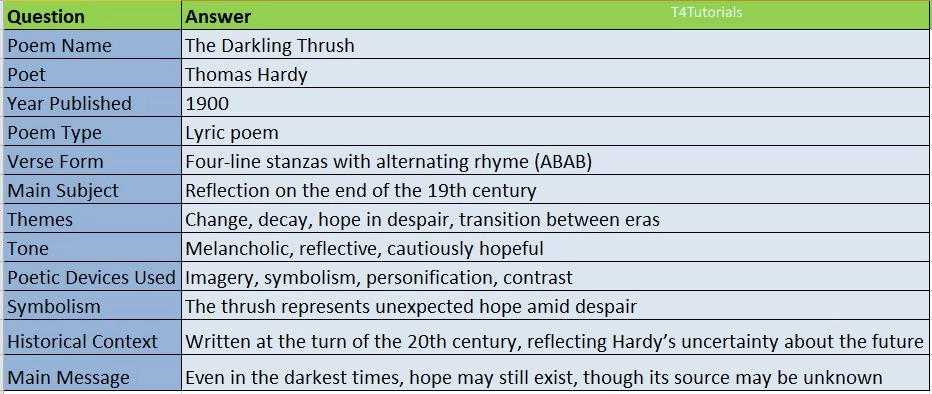Summary:
Thomas Hardy’s The Darkling Thrush (1900) is a contemplative poem that reflects on the end of the 19th century and the uncertainties of the future. The poem is set in a bleak winter landscape, symbolizing death, decay, and the fading of old traditions. The speaker, surrounded by desolation, feels a sense of hopelessness. However, amidst this gloom, a frail and aged thrush unexpectedly sings a joyful song. The contrast between the dreary setting and the bird’s hopeful melody highlights the theme of optimism in despair. Hardy suggests that, even in dark times, there may be a source of hope—though it might not be fully understood by the observe.

10
Score: 0
Attempted: 0/10
Subscribe
Score: 0
Attempted: 0/10
Subscribe
| Question | Answer |
| Poem Name | The Darkling Thrush |
| Poet | Thomas Hardy |
| Year Published | 1900 |
| Poem Type | Lyric poem |
| Verse Form | Four-line stanzas with alternating rhyme (ABAB) |
| Main Subject | Reflection on the end of the 19th century |
| Themes | Change, decay, hope in despair, transition between eras |
| Tone | Melancholic, reflective, cautiously hopeful |
| Poetic Devices Used | Imagery, symbolism, personification, contrast |
| Symbolism | The thrush represents unexpected hope amid despair |
| Historical Context | Written at the turn of the 20th century, reflecting Hardy’s uncertainty about the future |
| Main Message | Even in the darkest times, hope may still exist, though its source may be unknown |